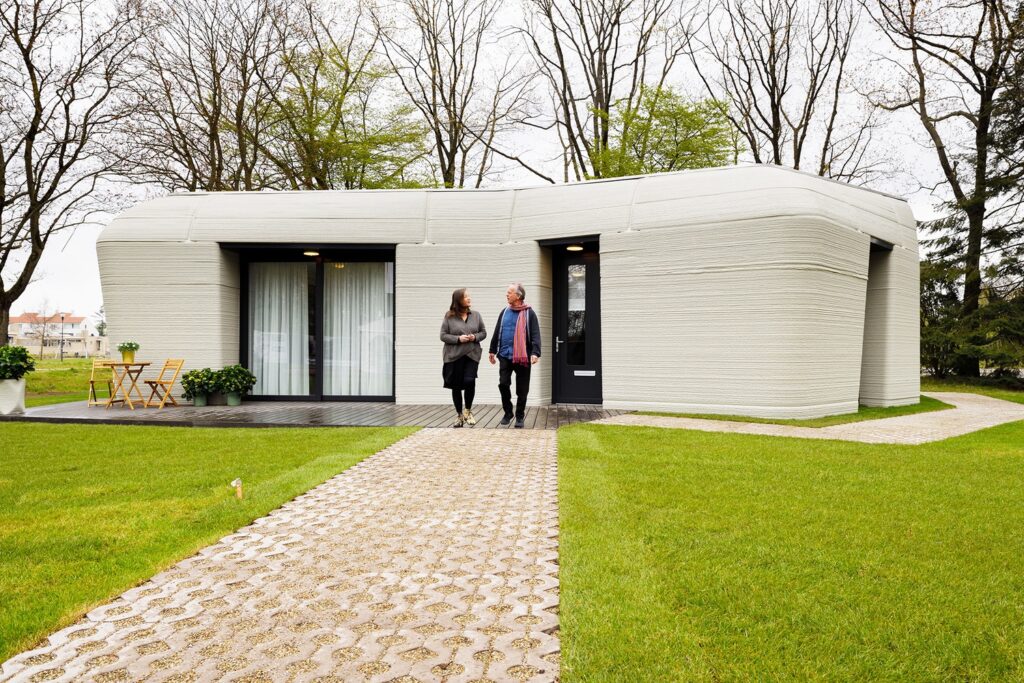Partanna Global, known for its “carbon-negative concrete,” has introduced a brand-new prototype home. This climate-resilient design claims to absorb carbon from the air, much like trees.
This unique house in the Bahamas shows how future homes can help the environment.
The Rocky Mountain Institute says new homes in the U.S. produce 50 million tons of carbon yearly. That’s equal to the emissions from 138 natural gas power plants. This is largely due to traditional concrete, which is made with carbon-heavy materials like cement. Cement production alone accounts for nearly 8% of global carbon emissions. As the need for homes grows, looking for eco-friendly alternatives to regular concrete is vital.
Partanna doesn’t use regular ingredients. Instead, it relies on reused brine and leftover steel materials. When mixed, they create something that can pull carbon dioxide out of the air. The Bahamas is perfect for this design. It has abundant brine and rising sea levels. This makes climate-friendly housing crucial now. Brine is plentiful here, helping island communities deal with rising sea levels.
Sustainable innovation is picking up speed. Sites like https://betlabel.com/en show the global move toward eco-friendly options. This includes green tech and strong buildings.
Partanna says its 1,250-square-foot house can absorb around 182 metric tons—or 200 U.S. tons—of carbon over its lifetime. According to Architectural Digest, this equals what 5,200 mature trees would take in.
Partanna’s new building method can help people save money and protect the planet. It uses materials that absorb pollution.
Many environmental experts say the best way to help the planet is to build smaller homes or not at all. Innovations such as Partanna’s carbon-capturing concrete give us hope.
In the future, homes like this could help the environment without costing residents more. They also allow for green development in areas most at risk from climate disasters. With the right rules and teamwork from the building industry, these materials could become the new normal for eco-friendly construction. Innovation and sustainability can go hand in hand. They can lead us to a brighter, cleaner future.
A future like that is crucial for people on islands at risk from rising sea levels.
“People in the Bahamas have always been strong and full of ideas, especially when dealing with climate change,” said Prime Minister Philip E. Davis in a statement shared by World Cement.
“We’re excited to announce the world’s first carbon-negative concrete home in Nassau,” the team said. “It shows that real solutions to global challenges can come from the most affected people.”
Rick Fox, a co-founder of Partanna, said the Bahamas home is “the solution” for smarter and greener building. It links sustainable development and pollution prevention.
“The Bahamas felt the full force of Hurricane Dorian,” he said. “This home is evidence that we can build better, all over,” noted Architectural Digest via MSN.com.
Partanna’s plan starts with this first home. They aim to build 1,000 carbon-negative houses every year. This project, launched in 2022, is part of a partnership with the Bahamian government. Strong homes for storm-prone communities can inspire other coastal areas to do the same.
Final Thoughts
Partanna’s carbon-negative home is more than a cool design. It’s vital as climate change worsens and extreme weather grows more common. It offers hope. By changing how we build, we can support vulnerable communities and fix the harm done to our planet. This prototype combines bold ideas, local partnerships, and a global vision. It could start a new era in sustainable living. It challenges the construction industry to think beyond efficiency and embrace regeneration. More governments and builders are noticing this. It may change how people view smart, eco-friendly buildings.



